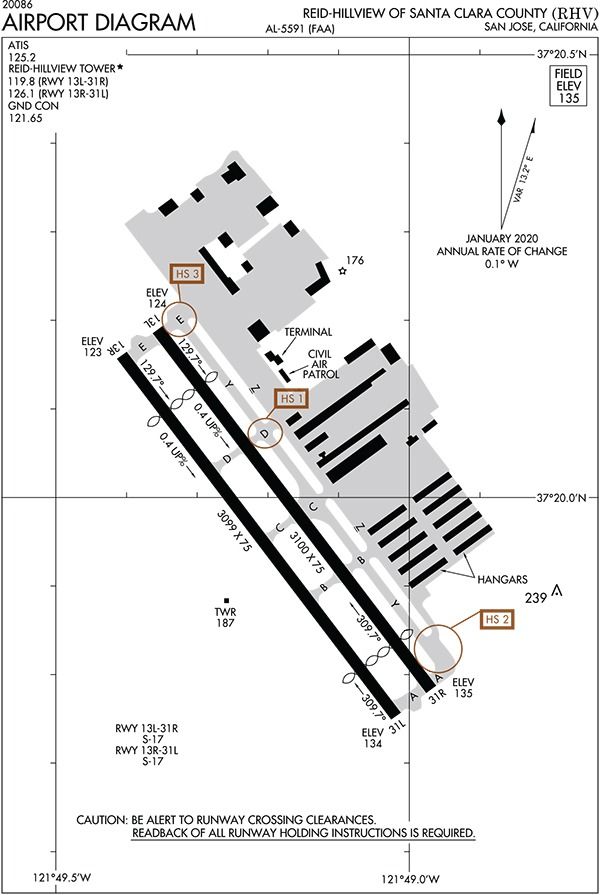
This change is an extensive update to the order that includes multiple amendments and corrections. Per FAA memorandum on NOTAM name modification in coordination with the FAA Administrator, the acronym NOTAM is updated from Notice to Airmen to the more applicable term Notice to Air Missions, which is inclusive of all aviators and missions.” So reads a statement from the agency accompanying the December 2, 2021, update to its, umm, Notices to Air Missions document, Order 7930.2S.
According to online sister publication AVweb.com, “The agency has purged all of the relevant guidance and regulatory documents of the former long-form term Notice to Airmen. Although the acronym part is getting the most attention, the revisions also contain changes that bring FAA terminology in line with that of the International Civil Aviation Organization (ICAO).”
The change is just the latest, but probably not the last, gender-neutral revision to longstanding terminology within the FAA. Remember when the Aeronautical Information Manual was the “Airman’s Information Manual”? Same thing, only the AIM change happened back in the 1990s, when Jane Garvey was serving as the agency’s first woman Administrator.
Among the remaining documents and terminology using “airman” is the airman certificate itself. It’s not known when or whether the FAA will tackle trying to come up with a gender-neutral alternative.

On December 17, 2021, the FAA named Capt. Billy Nolen, an aviation safety professional and former airline captain, to head the agency’s aviation safety organization as Associate Administrator for Aviation Safety. In his new position, Nolen will lead more than 7600 FAA employees in overseeing all aspects of aviation safety. Nolen most recently served as Vice President for Safety, Security and Quality for WestJet Airlines in Canada.
“I have spent my entire professional life seeking to influence and advance aviation safety and the safety culture of every organization I’ve been blessed to be a part of,” said Capt. Nolen. “I look forward to joining the incredible team of professionals that make up the FAA and working tirelessly to advance aviation safety both domestically and globally.”
Prior to his employment at WestJet, Nolen held safety leadership positions at Qantas Airways, Airlines for America and American Airlines.
FAA SENDS ‘STRONGLY WORDED LETTER’ TO SANTA CLARA COUNTY
California’s Santa Clara County, nestled at the south end of the San Francisco Bay, is the latest hotspot in what seems like a never-ending push to close general aviation airports. Most recently, the County has acted to ban 100LL aviation gasoline from the two airports within its jurisdiction, the Reid-Hillview Airport (RHV) and the San Martin Airport (E16), as of January 1, 2022. In response, the FAA, on December 22, 2021, sent the County what AOPA called a “strongly worded letter,” notifying it of an informal investigation into whether the proposed ban on 100LL is a violation of its grant assurances under FAR 13.1.
The FAA’s letter to the County comes on the heels of a joint letter from six aviation trade associations, including AOPA and the National Business Aviation Association (NBAA), urging the agency to act as a way of effecting “a smart, managed nationwide transition to unleaded fuels in general aviation aircraft, one with safety at its core.” The County’s action to ban 100LL comes on the heels of recent FAA approvals for unleaded fuels. Although the County has a long history of hostility to the two airports, its most recent move seems to be in the belief that banning 100LL will hasten the adoption of unleaded fuels. If the airports close as a result, well, that would be okay, too, in the County’s apparent calculus.
“The FAA is, and has been, testing and evaluating replacement fuels so that we can transition safely,” AOPA President Mark Baker said in response to the FAA’s letter to the County. “The FAA is our nation’s premier aviation safety organization, and this investigation has brought to light the safety issues surrounding the county’s proposal. It should compel them to reverse their actions and cooperate as soon as possible.”
Over at NBAA, the association’s Senior Vice President for Safety, Security, Sustainability and International Operations, Doug Carr, underscored the importance of preserving the availability of a range of avgas fuels at airports nationwide near term. “The general aviation industry has been working diligently for years to effect a safe transition of the entire GA fleet to unleaded fuels, and we are calling upon the FAA to prohibit a patchwork of local leaded-gas bans, which threaten to compromise safety and critical airport access during this transition,” Carr said.

Non-compliance with a manufacturer’s service bulletin dating from 1996 is being at least partially blamed for a possible in-flight fire occurring aboard a Piper PA-28-161 Cadet during 2021 in The Netherlands. The airplane had a “Low Volt” light illuminate, and then “white smoke appeared from below the left-hand side of the instrument panel.” The crew declared an emergency, performed appropriate checklists and landed without injury.
“The FAA is concerned that other aircraft included within the effectivity of SB991A may not have accomplished the modification. The FAA would like to gather data to determine if this issue requires additional consideration in light of the reported incident/accident,” according to an October 7, 2021 Airworthiness Concern Sheet (ACS). The ACS document often has been used by the FAA as a precursor to an airworthiness directive.
Aircraft identified in the Piper service bulletin include variants of the PA-23 Aztec, PA-28-161 Cadet, PA-28R Arrow, PA-31 Navajo and PA-38-112 Tomahawk. The service bulletin calls for installing a fuse in the alternator out light switch circuit.
5G UPDATE: FAA’S LATEST MOVES INCLUDE ALERT, ADS
“The FAA is working with the aviation and wireless industries to find a solution that allows 5G C-band and aviation to safely coexist. While that work is underway, the FAA alerted operators that Notices to Air Missions (NOTAMs) may be issued to restrict operations in areas where 5G interference is possible. It also provides additional information about aircraft systems that could be affected.” That’s the latest statement from the agency about the ongoing spat with the telecommunications industry and the Federal Communications Commission (FCC) over the technology’s possible disabling interference with radar altimeters.
As we reported in our January issue, the possibility of 5G cellular signals interfering with the devices was highlighted in a 2020 study by RTCA which found, in part, “a major risk that 5G telecommunications systems in the 3.7–3.98 GHz band will cause harmful interference to radar altimeters on all types of civil aircraft—including commercial transport airplanes; business, regional, and general aviation airplanes; and both transport and general aviation helicopters.” In November 2021, the FAA published Special Airworthiness Information Bulletin (SAIB AIR-21-18), Risk of Potential Adverse Effects on Radio Altimeters, seeking additional information from manufacturers and operators on the potential for interference.
Since then, the FAA also has issued two airworthiness directives (ADs) as well as a Safety Alert for Operators (SAFO 21007), “Risk of Potential Adverse Effects on Radio Altimeters when Operating in the Presence of 5G CBand Interference.” With a SAIB, a SAFO and two ADs over November and December 2021, it seems the agency is pulling out all of its readily available tools.
On issuing the ADs—AD 2021-23-12 and AD 2021-23-13—the agency noted that it “believes the expansion of 5G and aviation will safely co-exist. Today, we took an important step toward that goal by issuing two airworthiness directives to provide a framework and to gather more information to avoid potential effects on aviation safety equipment. The FAA is working closely with the Federal Communications Commission and wireless companies, and has made progress toward safely implementing the 5G expansion. We are confident with ongoing collaboration we will reach this shared goal.”
The FAA’s airworthiness directives were prompted by “a determination that radio altimeters cannot be relied upon to perform their intended function if they experience interference from wireless broadband operations in the 3.7-3.98 GHz frequency band (5G C-Band).” One AD (2021-23-12) was issued for transport and commuter category airplanes equipped with radar altimeters as the other (2021-23-13) addressed helicopters. Both require updating airplane or rotorcraft flight manuals to “incorporate limitations prohibiting certain operations requiring radio altimeter data when in the presence of 5G C-Band interference as identified by Notices to Air Missions (NOTAMs).”
Both ADs include a version of the following statement: “The FAA plans to use data provided by telecommunications providers to determine which airports within the United States have or will have C-Band base stations or other devices that could potentially impact airplane systems. NOTAMs will be issued, as necessary, to state the specific airports where the data from a radio altimeter may be unreliable due to the presence of 5G C-Band wireless broadband signals. For this reason, this AD requires flight manual limitations that prohibit certain operations requiring radio altimeter data at locations that will be identified by NOTAMs. Due to the dynamic nature of both the base station activation and the ongoing process of identifying the resulting affected airspace, including potential consideration for variability in C-Band deployment conditions such as radiated power levels and locations, the FAA has determined that NOTAMs are the best means to communicate changes in restrictions at affected airports.”





The formally published documents, as well as this article, are peppered with the words “possible” and “potential”. This leads the reader to question whether any observed or demonstrated interference cases exist and if they do, what reasonable technical mitigations have been assessed.
I’m a strong safety advocate, but restrictions based on conditions that could potentially or possibly occur, without a supporting body of research that says they HAVE occurred in an operationally representative environment, are greeted with a jaundiced eye. I want to believe this empirical research data exists but I haven’t seen it presented or referenced anywhere, other than the theoretical study referenced in the article. Can anyone point me to a good source for this kind of data?
Also reported is 5G is in use in Europe and coexists with aviation operations. Since everything in US aviation operations is moving more in alignment with ICAO why is it such a chore to determine how to make 5G work here? Why aren’t we implementing the mitigations in place in Europe?
These are honest questions, not criticisms. I’ll be appreciative of any point-outs to data sources that will increase my understanding of the situation.